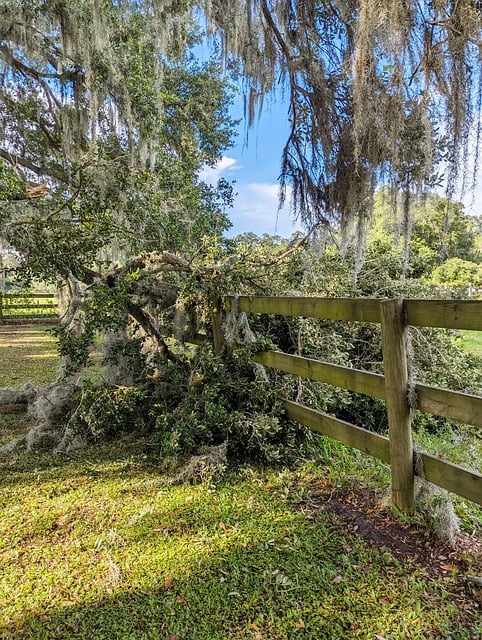Fence Staining and Sealing: A Comprehensive Guide for Prolonging Your Wooden Fences’ Lifespan
Maintaining an aesthetically pleasing and durable wooden fence requires regular care, and fencing staining and sealing are essential components. This guide delves into the benefits and various types of fence stains, offering a thorough preparation process to ensure optimal results. We’ll navigate choosing the perfect stain and sealer for your needs, providing a step-by-step approach to achieving professional-grade finishes that protect and enhance the beauty of your wooden fences.
- Understanding Fence Staining: Benefits and Types
- Preparing Your Wooden Fence for Staining and Sealing
- Choosing the Right Stain and Sealer
- Step-by-Step Guide to Professional Fence Staining and Sealing
Understanding Fence Staining: Benefits and Types
Fence staining is not just about aesthetics; it’s a protective measure too. The process involves applying a liquid pigment to the wood, enhancing its color and appearance. But beyond aesthetics, staining provides several key advantages. It shields the fence from the elements, preventing rot, decay, and pest damage by creating a barrier that repels water and blocks UV rays. Regular staining can significantly extend the lifespan of your wooden fence, saving you money in the long run on repairs or replacements.
There are various types of fence stains available, each offering distinct benefits. Water-based stains are popular for their low odor and quick drying time. They’re ideal for environments with high humidity levels. Oil-based stains, on the other hand, penetrate deeply into the wood, enhancing its natural grain and providing superior protection against fading and weathering. For a more subtle look, transparent stains allow the wood’s natural color to shine through while still offering some protection.
Preparing Your Wooden Fence for Staining and Sealing
Before applying stain or sealant, preparing your wooden fence is a crucial step to ensure optimal results. Start by cleaning the fence thoroughly to remove any dirt, dust, or debris that might interfere with adhesion. You can use a pressure washer or a brush and mild detergent, depending on the extent of grime. Ensure the wood is dry completely before proceeding, as moisture can compromise the integrity of both the stain and sealant.
Inspect the fence for any damaged or rot-prone areas. Repair any holes or cracks using a suitable wood filler or replace rotted sections to prevent further damage. Sanding the surface gently can help smooth out irregularities and create a more even base for staining. This preparation not only enhances the aesthetics but also prolongs the lifespan of your stain and sealant, creating a durable and attractive finish.
Choosing the Right Stain and Sealer
When it comes to enhancing your wooden fence, selecting the perfect stain and sealer is a crucial step. The market offers a vast array of options, each with unique properties and benefits. Consider the type of wood you have; different stains react differently on various wood species, so choosing a product suitable for your fence’s material is essential. Climate also plays a role; if you live in an area with frequent rainfall or extreme sun exposure, opt for a weather-resistant sealer to protect your fence from damage.
The right stain can transform the look and feel of your wooden fence, adding depth and character. It’s available in various colours, allowing you to create the desired aesthetic. Always read product descriptions and check customer reviews to ensure the stain you choose is suitable for both indoor and outdoor use and that it offers long-lasting protection against fading and peeling.
Step-by-Step Guide to Professional Fence Staining and Sealing
Step-by-Step Guide to Professional Fence Staining and Sealing
1. Preparation: Begin by cleaning the fence thoroughly to remove any dirt, dust, or debris. This step is crucial as it ensures better adhesion of the stain. Inspect the fence for any damaged sections, replace or repair as needed. Mask off areas not to be stained using drop cloths or plastic sheeting, and protect nearby plants or structures from overspray by covering them with protective barriers.
2. Staining: Choose a high-quality wood stain suitable for outdoor use. Apply the stain evenly using a brush or sprayer, following the manufacturer’s instructions on coverage rates. Start at one end of the fence and work in small sections, ensuring even distribution. Allow the first coat to dry completely before applying additional coats for desired color intensity. This process may take several hours or even a day, depending on the product and climate conditions.
